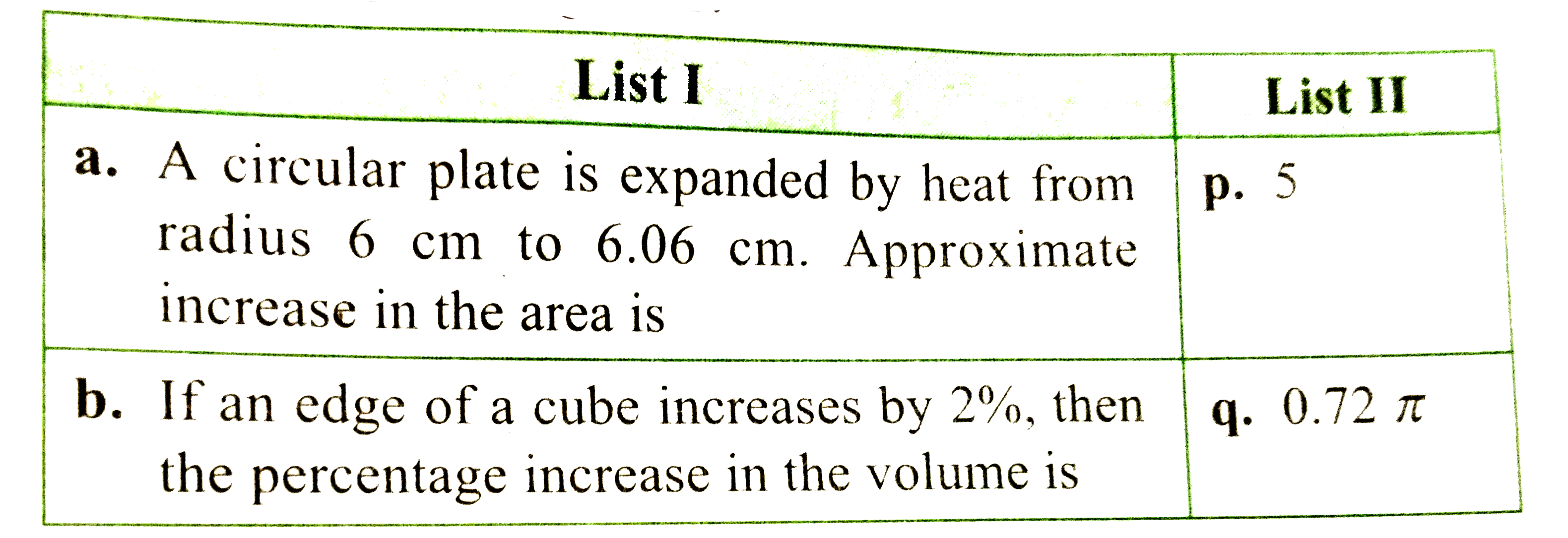The parabolas y2=4xandx2=4y divide the square region bounded by the lines x=4,y=4 and the coordinate axes. If S1,S2,S3 are the areas of these parts numbered from top to bottom, respectively, then S1:S2≡1:1 (b) S2:S3≡1:2 S1:S3≡1:1 (d) S1:(S1+S2)=1:2
To solve the problem, we need to find the areas S1,S2, and S3 formed by the parabolas y2=4x and x2=4y within the square region bounded by the lines x=4, y=4, and the coordinate axes.
Step 1: Graph the Parabolas
1. Graph the first parabola y2=4x:
- This opens to the right with the vertex at the origin (0,0).
- The points on this parabola can be calculated by substituting values for y to find corresponding x values.
2. Graph the second parabola x2=4y:
- This opens upwards with the vertex at the origin (0,0).
- The points on this parabola can be calculated by substituting values for x to find corresponding y values.
3. Identify the intersection points of the two parabolas:
- Set y2=4x and x2=4y equal to find the points of intersection.
Step 2: Find the Intersection Points
1. Substitute y=x24 into y2=4x:
(x24)2=4x⟹x416=4x⟹x4−64x=0⟹x(x3−64)=0
- This gives x=0 or x=4.
- Substituting x=4 back into either equation gives y=4.
2. The intersection points are (0,0) and (4,4).
Step 3: Calculate Areas S1,S2,S3
1. Area S3 (bounded below by y2=4x):
S3=∫40(y24)dy=∫40(y24)dy=14⋅y33∣∣40=14⋅643=163
2. Area S2 (bounded between the two parabolas):
S2=∫40(√4y−y24)dy
- Calculate the integral separately for each part and subtract.
3. Area S1 (the total area of the square minus S2 and S3):
S1=16−S2−S3
Step 4: Find Ratios
1. Calculate the ratios S1:S2, S2:S3, and S1:S3.
2. Compare the calculated ratios with the options provided in the question.
Final Step: Conclusion
After calculating the areas and their ratios, we find that the correct options based on the ratios of areas S1,S2, and S3 are:
- S1:S2=1:1
- S2:S3=1:2
- S1:S3=1:1
- S1:(S1+S2)=1:2
1. Graph the first parabola y2=4x:
- This opens to the right with the vertex at the origin (0,0).
- The points on this parabola can be calculated by substituting values for y to find corresponding x values.
- This opens upwards with the vertex at the origin (0,0).
- The points on this parabola can be calculated by substituting values for x to find corresponding y values.
- Set y2=4x and x2=4y equal to find the points of intersection.
1. Substitute y=x24 into y2=4x:
(x24)2=4x⟹x416=4x⟹x4−64x=0⟹x(x3−64)=0
- This gives x=0 or x=4.
- Substituting x=4 back into either equation gives y=4.
1. Area S3 (bounded below by y2=4x):
S3=∫40(y24)dy=∫40(y24)dy=14⋅y33∣∣40=14⋅643=163
S2=∫40(√4y−y24)dy
- Calculate the integral separately for each part and subtract.
S1=16−S2−S3
1. Calculate the ratios S1:S2, S2:S3, and S1:S3.
2. Compare the calculated ratios with the options provided in the question.
After calculating the areas and their ratios, we find that the correct options based on the ratios of areas S1,S2, and S3 are:
- S1:S2=1:1
- S2:S3=1:2
- S1:S3=1:1
- S1:(S1+S2)=1:2
Topper's Solved these Questions
Similar Questions
Match the following lists:


View SolutionA lamp post of length 10 meter placed at the end A of a ladder AB of length 13 meters, which is leaning against a vertical wall as shown in figure and its base slides away from the wall. At the instant base B is 12 m from the vertical wall, the base B is moving at the rate of 5 m/sec. A man (M) of height 1.5 meter standing at a distance of 15 m from the vertical wall.

Rate at which θ decreases, when the base B is 12 m from the vertical wall, is
View SolutionThe parabola x2=4y and y2=4x divide the square region bounded by the lines x=4, y=4 and the coordinate axes. If S1,S2,S3 are respectively the areas of these parts numbered from top to bottom, then S1:S2:S3 is (A) 2:1:2 (B) 1:2:1 (C) 1:2:3 (D) 1:1:1
View SolutionIf S1=Σn,S2=Σn2,S3=Σn3,then the value of limn→∞S1(1+S38)S22 is equal to
View SolutionThe parabolas y2=4xandx2=4y divide the square region bounded by the lines x=4,y=4 and the coordinates axes. If S1,S2,S3 are the areas of these parts numbered from the top to bottom respectively,then-
View SolutionThe parabolas y2=4x and x2=4y divide the square region bounded by the lines x=4 , y=4 and the coordinate axes. If S1,S2,S3 are respectively the areas of these parts numbered from top to bottom , then S1:S2:S3 is :
View SolutionIf S1,S2andS3 be respectively the sum of n, 2n and 3n terms of a G.P., prove that S1(S2+S3)=(S1)2+(S2)2
View SolutionIf the sum of n,2n,3n terms of an AP are S1,S2,S3 respectively . Prove that S3=3(S2−S1)
View SolutionIf S1,S2,S3 be respectively the sums of n,2n,3n terms of a G.P., then prove that (S1)2+(S2)2=S1(S2+S3) .
View SolutionIf S1,S2,S3 are the sums to n, 2n, 3n terms respectively for a GP then prove that S1,S2−S1,S3−S2 are in GP.
View SolutionIf S1,S2andS3 are respectively the sums of n, 2n and 3n terms of an AP.Prove that S3=3(S2−S1)
View Solutionਮੰਨ ਲਉ ਕਿਸੇ A.P. ਦੇ n, 2n, 3n ਪਦਾਂ ਦਾ ਜੋੜ ਕ੍ਰਮਵਾਰ S1, S2 ਅਤੇ S3, ਦਿਖਾਉ ਕਿ S3=3(S2−S1)
View SolutionIf S1,S2 and S3 be respectively the sum of n, 2n and 3n terms of a G.P .Prove that S1(S3−S2)=(S2−S1)2.
View SolutionIf S1,S2,S3 are the sum of first n natural numbers, their squares and their cubes, respectively, show that 9S22=S3(1+8S1)
View SolutionThe parabolas y2=4xandx2=4y divide the square region bounded by the lines x=4,y=4 and the coordinate axes. If S1,S2,S3 are the areas of these parts numbered from top to bottom, respectively, then S1:S2≡1:1 (b) S2:S3≡1:2 S1:S3≡1:1 (d) S1:(S1+S2)=1:2
View Solution

